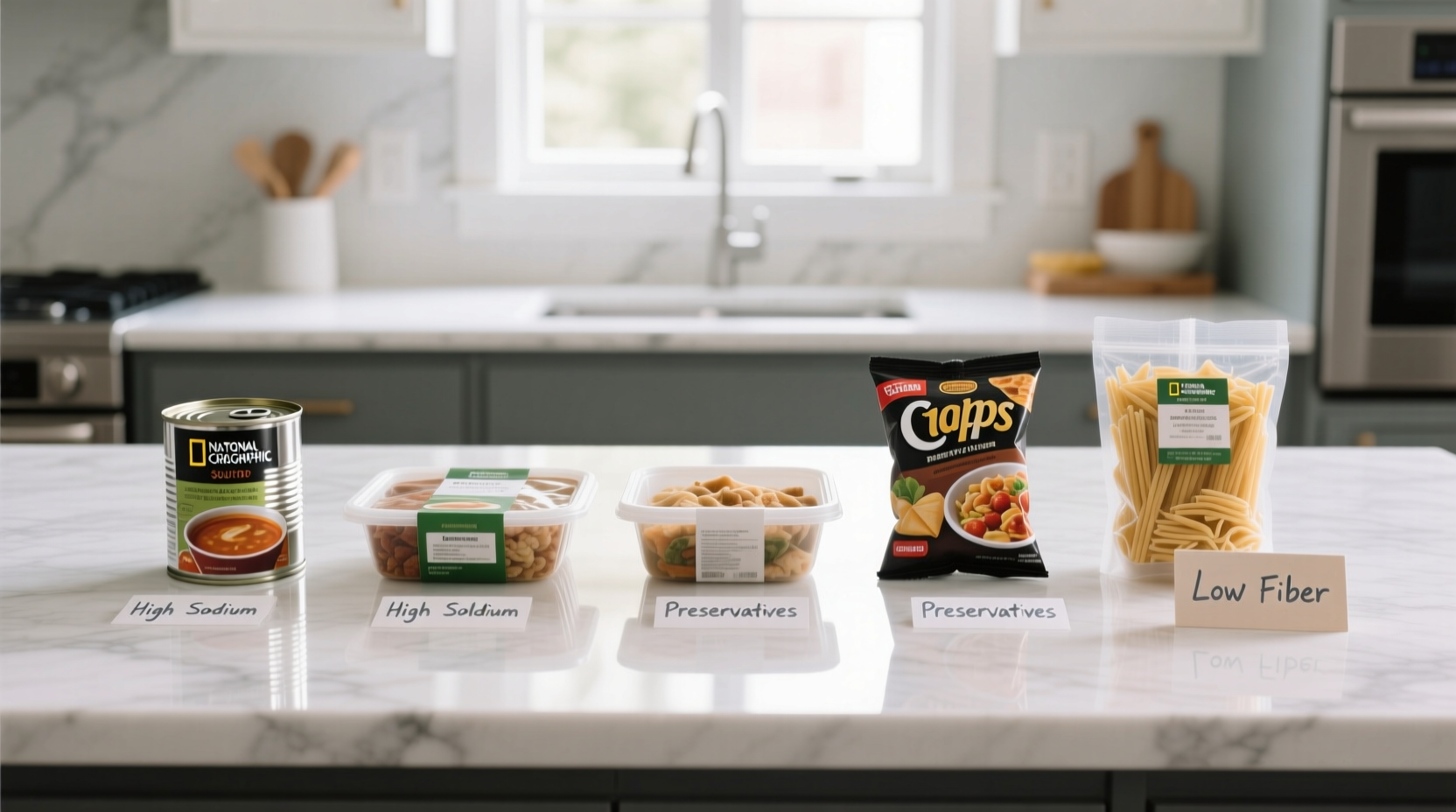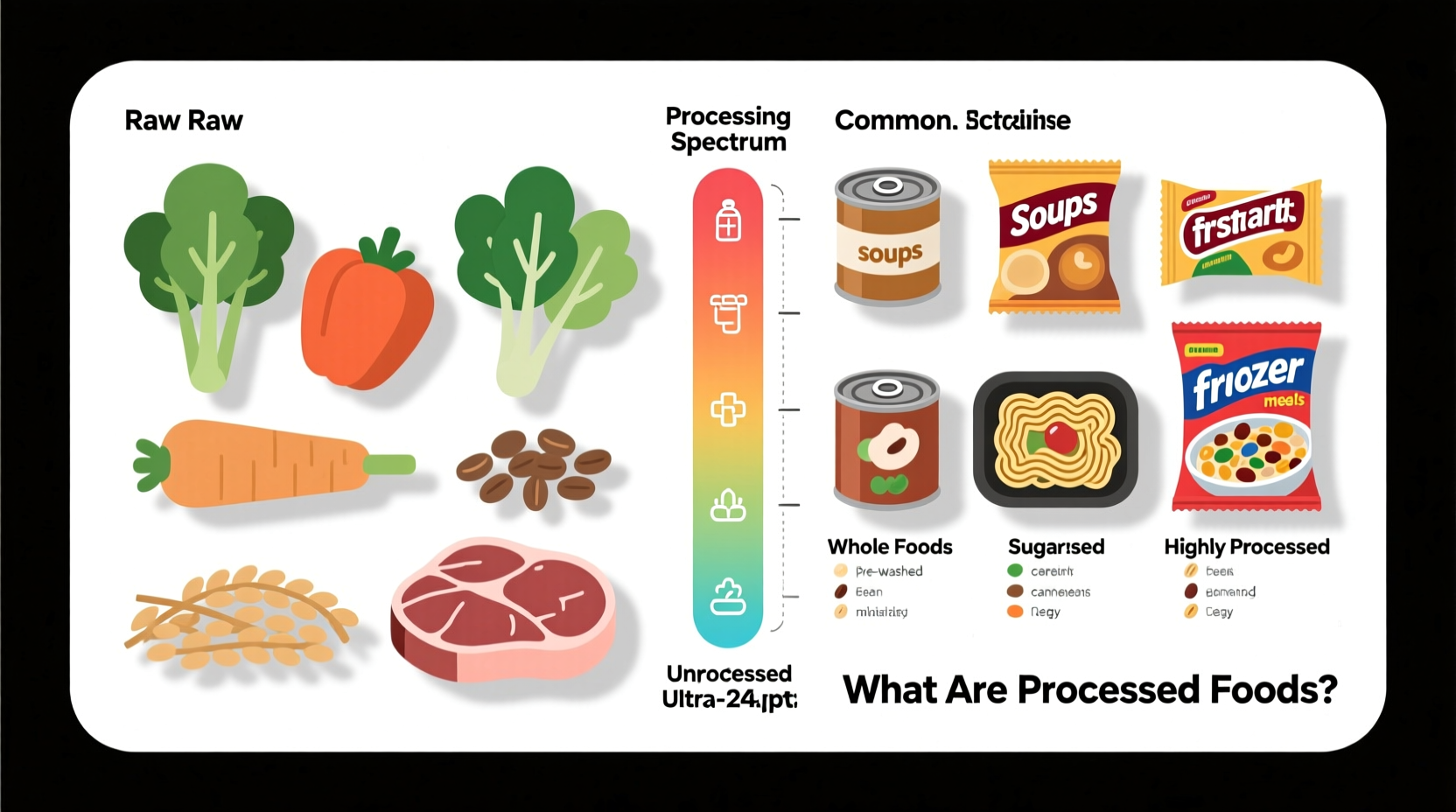Understanding what qualifies as processed food helps you make informed dietary choices without unnecessary fear. This guide clarifies the spectrum of food processing, provides concrete examples you'll recognize from your kitchen, and explains why certain processing methods benefit both safety and nutrition.
The Food Processing Spectrum: It's Not All Equal
Many people mistakenly believe "processed" automatically means "unhealthy." In reality, food processing exists on a continuum from minimal to extensive. The NOVA classification system, developed by researchers at the University of São Paulo, categorizes foods into four groups based on processing level:
| Processing Level | Definition | Common Examples |
|---|---|---|
| Unprocessed/Minimally Processed | Natural foods with no additives or minimal alteration | Fresh fruits, vegetables, eggs, milk, dried beans |
| Culinary Ingredients | Substances extracted from whole foods for cooking | Olive oil, salt, sugar, vinegar |
| Processed Foods | Simple products made by adding culinary ingredients | Cheese, canned vegetables, freshly baked bread |
| Ultra-Processed Foods | Industrial formulations with multiple additives | Soda, packaged snacks, ready-to-heat meals |
Minimal Processing: Safety and Convenience
Minimal processing makes foods safer and more convenient without fundamentally changing their nutritional profile. These foods maintain most nutrients while extending shelf life:
- Pasteurized milk - Heated to eliminate harmful bacteria while preserving nutritional value
- Pre-washed salad greens - Convenience without significant nutrient loss
- Frozen vegetables - Often flash-frozen at peak ripeness, preserving nutrients better than fresh produce shipped long distances
- Dried herbs - Concentrated flavor without additives
According to the U.S. Food and Drug Administration, minimal processing techniques like freezing, drying, and pasteurization have safely preserved food for centuries while maintaining nutritional integrity.
Everyday Processed Foods You Likely Consume
Many common kitchen staples qualify as processed but remain nutritionally valuable. These foods undergo processing to enhance safety, flavor, or shelf life:
| Food Category | Processing Method | Nutritional Value |
|---|---|---|
| Canned tomatoes | Heat-treated and sealed | Higher lycopene bioavailability than fresh |
| Natural cheese | Fermentation and aging | Good calcium and protein source |
| Whole grain bread | Baking with minimal ingredients | Fiber and B vitamins intact |
| Canned beans | Cooked and sealed | Retains protein and fiber |
These foods demonstrate that processing doesn't automatically mean unhealthy. In fact, some processing methods increase nutrient availability, as with cooked tomatoes containing more bioavailable lycopene than raw ones.

Identifying Ultra-Processed Foods
Ultra-processed foods differ significantly from minimally processed options. They typically contain:
- Five or more ingredients, including items rarely used in home cooking
- Industrial additives like emulsifiers, artificial colors, or flavor enhancers
- Little to no whole food ingredients
Common ultra-processed foods include:
- Sugar-sweetened beverages
- Mass-produced packaged snacks
- Ready-to-heat meals with long ingredient lists
- Instant noodle products
Research published in The BMJ shows that diets high in ultra-processed foods correlate with increased health risks, while minimally processed foods remain part of healthy dietary patterns worldwide.
When Processing Becomes Problematic
Not all processed foods carry the same implications for health. Consider these context boundaries:
- Nutrient density matters more than processing level alone - Some processed foods like canned salmon provide essential nutrients
- Processing purpose determines value - Pasteurization prevents foodborne illness, while excessive additives serve only shelf-life or taste
- Cultural context influences processing - Fermented foods like kimchi or yogurt are traditional processed foods with health benefits
- Portion size affects impact - Occasional ultra-processed foods differ from making them dietary staples
The historical evolution of food processing reveals its necessity. Before refrigeration, humans developed preservation techniques like drying, fermenting, and salting to prevent food waste and ensure year-round nutrition. Modern processing builds on these ancient techniques while introducing new methods for food safety and convenience.
Practical Guide to Smart Food Choices
You don't need to eliminate all processed foods. Instead, follow these practical strategies:
- Read ingredient lists - Shorter lists with recognizable ingredients typically indicate less processing
- Check for added sugars - Look beyond obvious sugars to hidden forms like maltodextrin or high-fructose corn syrup
- Compare similar products - Choose options with fewer additives and more whole food ingredients
- Balance your plate - Make minimally processed foods the foundation of your diet
Remember that "processed" isn't synonymous with "unhealthy." Many processed foods provide valuable nutrition, convenience, and food safety benefits. The key is understanding the spectrum of processing and making informed choices based on your personal health goals.











 浙公网安备
33010002000092号
浙公网安备
33010002000092号 浙B2-20120091-4
浙B2-20120091-4